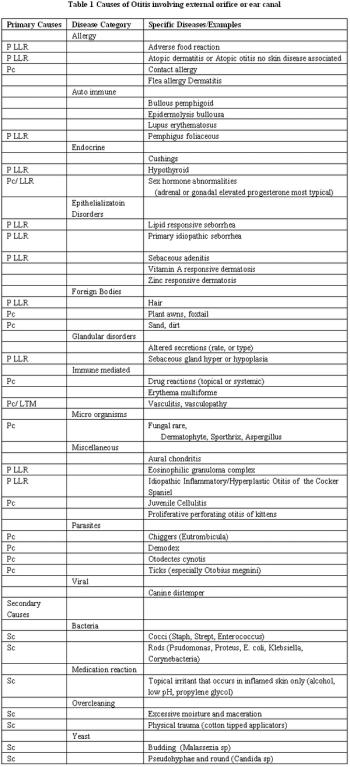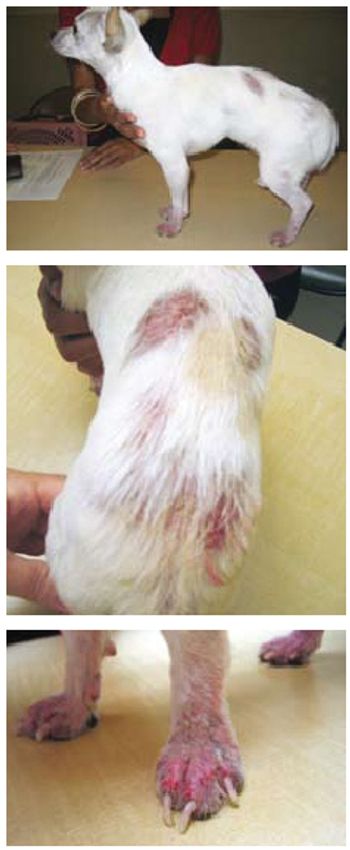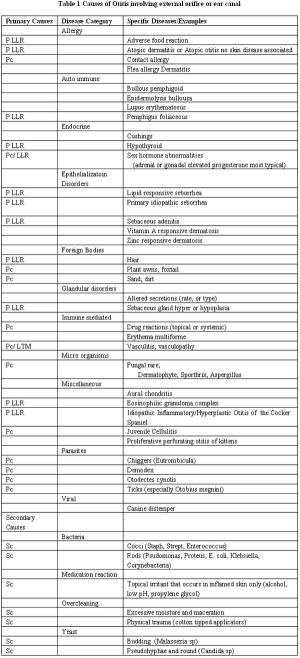
Dr. Craig Griffin offers his tips.

Dr. Craig Griffin offers his tips.

How to achieve an optimal outcome in veterinary patients with ear infections or allergic conditions.

Could well-intentioned clients be accidentally sabotaging your allergy diagnosis?

The most common derm problem in cats is itchy skin disease. Often these cats have allergic skin disease with many cases related to flea allergy dermatitis, atopic dermatitis and adverse food reactions.

It is common for more than one primary disease to be present, at least in the referral population seen at my practice. Multiple or changing secondary etiologies are also common. The most optimum management of a case requires that we recognize which primary diseases, secondary etiologies as well as modulating factors are present.

The cat has some important anatomic differences from the dog. The obvious is that there is less breed variation in pinna shape and conformation as well as relatively short and straighter ear canal.

Ear disease is a very common problem presented to veterinarians. It may be broken down into two major components, pinnal disease and otitis, though the strict definition of otitis would include any inflammatory pinnal disease.

Poor hair coats and alopecia that are not a result of inflammation or pruritus and are symmetric or involve much of the body most commonly reflect a disorder of hair growth that is metabolically or genetically related. In general the disorders will fit into one of four categories.

A variety of different diseases are in the category of what are referred to as autoimmune or immune mediated dermatologic diseases. The diseases typically have differing etiologies though a significant component in there pathogenesis is an abnormal or deleterious immune response that affect normal cutaneous structures, such as epidermal keratinocytes, basement membranes, blood vessels or adnexal structures.

Pyoderma and bacterial folliculitis in the dog is considered to be very common problems yet in the cat are described as rare or very uncommon in textbooks on small animal dermatology. A study in France of 783 feline derm cases evaluated between 1992 and 1997 diagnosed pyoderma in 4.7%.

Skin infections with bacteria (pyoderma) or yeast (Malassezia dermatitis) often are found in dogs secondary to other diseases such as seborrhea, endocrine diseases and allergic diseases.

Veterinary dermatology is a relatively straight forward aspect of veterinary medicine to deal with because the diseased organ is able to be visualized and palpated by the veterinarian but also by the technician and owner. The technician can and should play an integral role in cases with skin disease.

Treatment of otitis externa is dependent on identifying and controlling the predisposing factors, primary and secondary causes and perpetuating factors whenever possible. Inadequate treatment and reversal of the progressive pathologic responses, tympanic membrane alterations, and otitis media often leads to treatment failures or recurrences.

The pathogenesis of canine atopic dermatitis is complex and our understanding of it continues to change and advance.

In this article, I review the efficacy of immunotherapy for treating atopic dermatitis, help you ease your clients' nerves about administering the injections, and show you how to easily adapt the administration protocol based on a patient's responses to the injections.

Published: November 1st 2010 | Updated:

Published: November 1st 2010 | Updated:

Published: November 1st 2010 | Updated:

Published: November 1st 2010 | Updated:

Published: November 1st 2010 | Updated:

Published: November 1st 2010 | Updated: